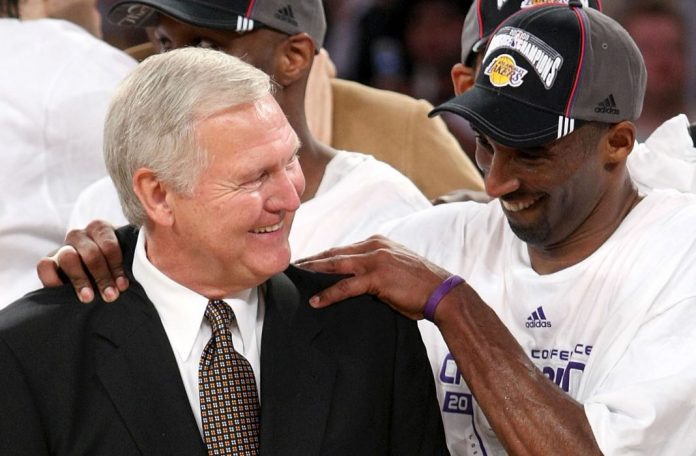It doesn’t take a genius to figure out the impact LeBron James has on the Cavaliers. James makes the Cavaliers perennial contenders, no matter what the roster around him looks like.
Everybody also knows, however, the Cavaliers didn’t maximize their potential with James. When you have the best basketball player of all-time on your roster and you fail to win more than one championship, something is wrong. A lot of people pinned the blame on the front office, and rightfully so. Bad management can make it near impossible for a great player to win a championship, which LeBron James knows all too well.
Vice versa, a competent front office can sometimes have a far greater impact than any player on the court. In these situations, it often only takes the ingenuity of one man to succeed. This is the case for Jerry West. Few men in basketball history have had a keener eye for talent or a better understanding of the NBA world. Behind the scenes, West has created three of the most dominant teams in the modern era, creating dynasties and winning championships along the way.
Most fans know West as the man who kept losing to Bill Russell or as the NBA logo. What they don’t know him as is the man who engineered the Showtime Lakers and brought Kobe and Shaq together. The man who saved the Golden State Warriors from destroying their future and lifting the Memphis Grizzlies from obscurity.
So, how exactly did he do it all? West took enormous gambles, and those decisions paid off to the extreme. Some may call it luck, but others would call it attention to detail and careful judgement. Jerry West lives and breathes basketball, and his career as an executive alone makes him one of basketball’s most legendary figures.
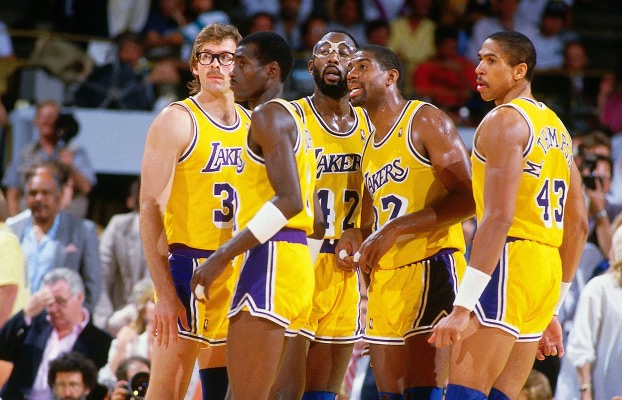
The Showtime Lakers
Magic Johnson was the number one prospect in his class, and there’s no surprise the Lakers took him number one overall. As we know, however, a single great player doesn’t win championships. Jerry West’s work after drafting Magic perfectly embodies how important the front office is to a basketball team.
After becoming the GM in 1982, West drafted James Worthy with the number one pick given by Ted Stephen (I say given because that’s what the Cavaliers were doing at the time). This was only West’s first year as general manager, and it was a gutsy decision, to say the least.
Many Lakers fans were enamored with the idea of Dominique Wilkins flying alongside a young Magic Johnson and were understandably unhappy. Worthy ended up being better for the Lakers, however, and averaged 17.6 PPG in Los Angeles. Fans started calling him “Big Game James” for always keeping cool under pressure (forget 1989) and raising his play in the playoffs. Worthy even won the Finals MVP in ’88 and made seven All-NBA teams with the Lakers, fully justifying West’s decision. Things turned out as well they could’ve for the Lakers, and it’s doubtful Wilkins could’ve matched that success.
West also traded All-Star PG Norm Nixon away, betting that Johnson would reach his full potential if he was the sole ball-handler. He counted on rookie Byron Scott developing into a better fit with Magic, which of course, he was. Scott helped pioneer the idea of the three-and-D player, averaging 15.1 PPG and shooting 37.3% from three. His floor-spacing allowed Magic to average an astounding 13.6 APG and shoot a career-high 56.5 FG%.
Foresight like this allowed West to create one of the NBA’s signature teams at the time. Move after move, West matched Celtics’ executive Red Auerbach, as the two built the NBA’s greatest rivalry to date. For an entire decade, the NBA Finals featured either the Celtics or the Lakers, a phenomenon that West played a large hand in.
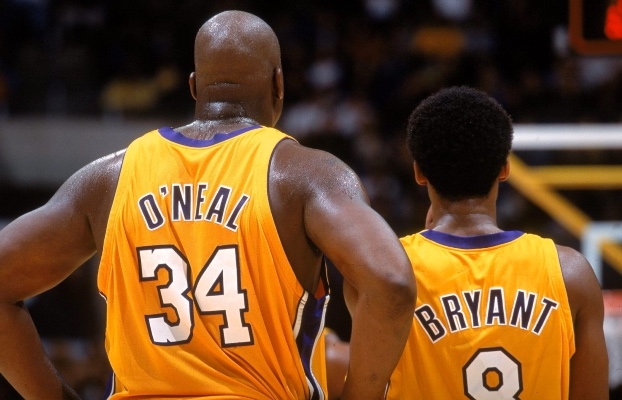
Creating Kobe and Shaq
After Magic retired in 1992, it was officially the end of the Showtime Lakers. It had been a good run for the Lakers, who had won five out of nine NBA Finals in twelve years.
West ignored the tanking tactic that was rising in popularity, and instead, made the Lakers one of the most attractive free agent destinations. Los Angeles was still the center of the NBA, and West just needed to improve the roster. He kept the Lakers a playoff team, adding young players like Eddie Jones and Cedric Ceballos who’d develop into high-quality role players. Then, he relied on the tried and true Los Angeles’ glitz and glamor to reel in a star.
Although this was a strategy the Lakers unsuccessfully tried over and over again in the 2000’s, it paid off for West in the 90’s. In a time without a salary cap, the Lakers took full advantage of their status as one of the wealthiest NBA franchises. In ’96, the Lakers signed Shaquille O’Neal.
Just weeks later, West parlayed center Vlade Divac into Kobe Bryant. Note that West took Divac late in the first round back in 1989, and by 1996, Divac had already averaged 16 points and 10.4 rebounds per game in a season. West traded a borderline All-Star for an unproven teenager, yet the Lakers’ faith in him was great enough that management barely questioned it.
Kobe would turn into an all-time great, and whether he liked it or not, the perfect Robin to Shaq’s Batman. Thus, West had completed one of the most devastating duos not only in Lakers’ history but in the NBA’s, barely four years after Magic Johnson’s retirement.
This trade created a true NBA dynasty. The Lakers won the championship in 2000, not even a decade after their last Finals’ appearance with Magic. West would leave the team as GM after this season, but the foundation he set led to three more Finals appearances and two more championships. Kobe would also go on to lead to the Lakers to two more championships in 2009 and 2010. With one move, West changed the future of the Lakers’ forever and made them arguably the greatest sports franchise in America.
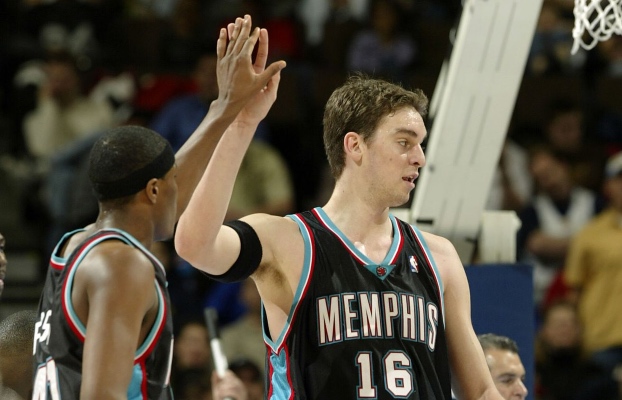
Saving the Memphis Grizzlies from free-fall
West joined the Memphis Grizzlies as a consultant in 2002, citing a want for a different challenge. He had achieved everything he wanted to with the Lakers. Now, it was time for West to cut his teeth on a test infinitely harder.
The Grizzlies were the lowliest team in the NBA, having never won over 23 games in their short existence. Lottery pick Steve Francis even refused to play for the Vancouver Grizzlies in 1999. The team had to relocate from Vancouver to Memphis only six years after their inaugural season.
Somehow, some way, Jerry West managed to turn it around. After only one year with West on board, the Grizzlies won 50 games. Memphis made the playoffs for the first time in franchise history.
West took a different approach to rebuilding the Grizzlies. Instead of making big trades and making risky gambles on young prospects, West barely changed the roster. He recognized that there was real talent there that just needed space to develop without being rushed by management.
Pau Gasol was already an All-Star level talent but was too young to earn many wins. West capitalized on Gasol’s elite post-up skills by surrounding him with shooters. He kept Shane Battier and James Posey (37.9% and 35.7% respectively from three while in Memphis) and traded for Mike Miller (42.0%). He even got notoriously inefficient point guard Jason Williams to shoot over 40% from the field. West also signed Hubie Brown, who’d win Coach of the Year in 2004. After winning only 28 games in 2003, the 22-game improvement was extremely impressive.
Although the Grizzlies never won a playoffs series, nobody in the organization could blame Jerry West. Memphis went from being one of the worst teams in the league to being respectable, all in a year. The Grizzlies won 50 games, then 45, then 49 before Gasol broke his foot in 2007. West left the team following 2007, after lifting a struggling organization to relevance for the first time.
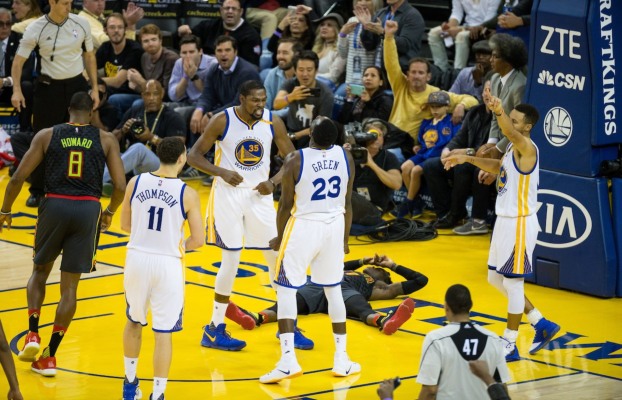
Assembling the Golden State Superteam
GM Bob Myers did a laudable job constructing the current Warriors, but without West’s guidance, it wouldn’t have been possible. West joined Golden State as a special consultant in 2011. Although he didn’t have any official power as a manager, his words carried heavy weight through the office.
It was the Warriors’ impressive scouting team, helped by West, that made their success possible. In 2015, four of the five Warriors starters—Stephen Curry, Klay Thompson, Harrison Barnes, and Draymond Green—were all drafted by Golden State. This homegrown talent made keeping the team together easier and quickly developed chemistry.
Although Curry was drafted before West arrived, West played a big role in creating the Splash Brothers. In 2011, West lobbied hard for Klay Thompson’s selection with the 11th pick, believing Thompson would be the steal of the draft. After years of steady improvement, owner Joe Lacob wanted to trade him away in a package for Kevin Love.
Love had just averaged 26.1 points per game and 12.5 rebounds, and even made 2.5 threes per game. Meanwhile, Thompson averaged 18.4 points per game on 41.7% from three and looked like a possible breakout star. West was adamant that the Warriors should keep Thompson and threatened to resign if they traded him. The Warriors ended up declining the deal, and though West’s opinion wasn’t the only factor, his disapproval certainly discouraged Warriors management.
Only a few months later, the Warriors began the 2014-15 NBA season. Klay Thompson proved vital to a championship team that won 67 games, averaging a career-high 21.7 PPG. Alongside Stephen Curry, the two combined to make the most threes by a duo in a season in NBA history.
Thompson wasn’t the only draft steal West wanted. Second round pick Draymond Green also garnered West’s admiration early in the draft process in 2012. Green would turn into both an All-Star and Defensive Player of the Year, and along with Thompson, helped make the Warriors the number one ranked defense in the NBA.
West left the team in 2017, with the Warriors at their zenith after signing Durant. Never forget that West also was a major factor in that decision too. Already intrigued at the idea of playing on the most entertaining team in basketball, West sealed the deal for Durant. When basketball’s greatest team executive personally calls and recruits you, it’s a hard opportunity to pass up.
Similar to his departure in 2000 from the Lakers, he had done what he was hired to do. West had helped create possibly the most dominant team in NBA history, on their way to three-peat after championships in 2015, 2017, and 2018. Once again, West’s natural sense for basketball talent guided another NBA team to success. With his job finished, West started looking for another challenge. He found it in the Los Angeles Clippers, a team at a crucial juncture of their future.
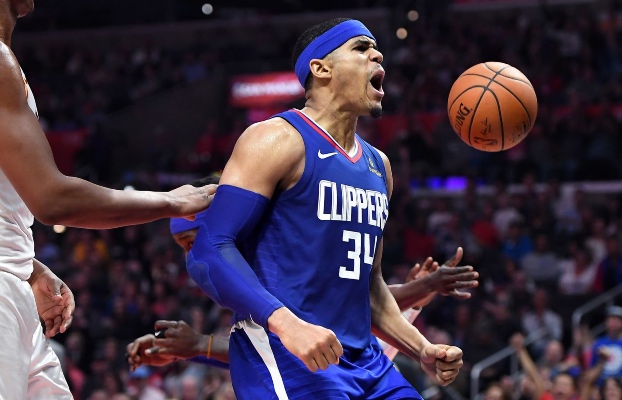
Future Superteam?
With the Los Angeles Clippers, West has helped create a situation eerily similar to the years leading up to O’Neal’s signing. Los Angeles traded Griffin and his $141 million contract to the Pistons, freeing up cap space. The Clippers also declined to pursue Chris Paul in free agency, letting him go to the Rockets in a sign-and-trade. In return, Los Angeles acquired Tobias Harris, Boban Marjanovic, Lou Williams, Patrick Beverley, Avery Bradley, and Montrezl Harrell.
The Clippers have stacked their roster with high character veterans who’ve mentored the younger players. Williams and Harris have led Los Angeles to the first seed in the West so far and have exceeded all expectations. Harrell and Beverley have been spark plugs off the bench, providing energy and setting an excellent example for the rookies. Bradley has been the defensive wing Los Angeles has lacked for so long, and even Marjanovic has sufficiently contributed in spot minutes.
The Clippers have shown foresight never displayed in the past few decades, all with Jerry West on board. They’ve structured player contracts to run out in 2019 and 2020, freeing up cap space for big free agents. Los Angeles has finally started to value draft picks, relying on West’s scouting skills to net them talent.
They’ve drafted Shai-Gilgeous Alexander, a reasonably safe pick who, although lacks a jump shot, is an accomplished playmaker and athlete. Two picks later, Los Angeles took a gamble on Jerome Robinson, a skilled shot-creator with questionable athleticism. Though these two players may not be superstars, they show how the Clippers are finally valuing young talent.
With these decisions, the Clippers have prepared themselves for both the present and the future. Los Angeles can have $45 million in cap space this summer and will make a run at a deep free agent class. If they trade away Avery Bradley, this number reaches almost $70 million. This cap space extends to 2020 too, as more players like Montrezl Harrell become free agents.
Perhaps it will be Kevin Durant joining the Clippers next summer or Anthony Davis in 2020. Many players have already targeted Los Angeles as a trade destination, something that hasn’t happened before in franchise history. It’s no coincidence that all these rumors appeared after Jerry West joined the team.
The Legacy of an NBA legend
This is the Jerry West effect. He brings championships to teams and changes them forever. From being the NBA logo to building some of basketball’s greatest teams, West is a basketball legend. The NBA may never see another man who was as talented as an executive as he was a player. Even at 80, West refuses to rest, determined to take the Clippers as far as he can. After taking a glance at the rest of his resume, it’s safe to say Los Angeles is in good hands.

